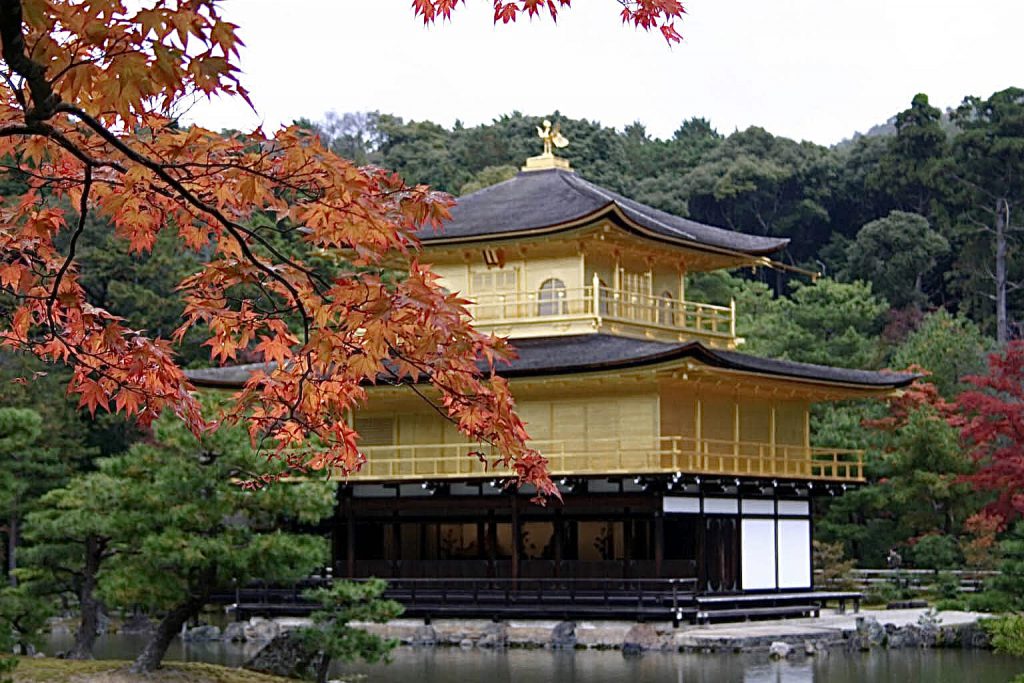
Kinkakuji Temple in the spring when Kakitsubata (Japanese iris) blooms and Kinkakuji Temple now in autumn colors. These looks are the ultimate in beauty. When the hustle and bustle of the day subsides and the true silence comes, one wants to monopolize the infinitely beautiful things that stand in the silence of the dark night. However, at the same time, he notices the ugliness of the mind and body inherent in himself, and is jealous of its beauty. As a result, the devilishness of a person who wanted to drown out the self-contradiction in the passion of fire arose and the fire was set up to the Kinkakuji Temple. It is an event in 1950. Yukio Mishima’s “Kinkakuji” and Tsutomu Minakami’s “Kinkakuji Enjou” took up this case from various angles.
杜若(カキツバタ)咲く春の金閣寺、そして今、紅葉に染まる金閣寺。甲乙つけがたいこの美しさは美の極致です。昼間の喧騒がおさまり、本当の静寂が訪れたとき、闇夜の静寂にたたずむ無限に美しきものを独占したいという気持ちと、おのが身と心の醜さに引き比べて嫉妬し、炎という情念の中にかき消したいという人の魔性を引き出した結果が金閣寺炎上です。1950年、昭和25年の出来事です。三島由紀夫の『金閣寺』や水上勉の『金閣寺炎上』には、いろんな角度からこの事件が取り上げられています。
